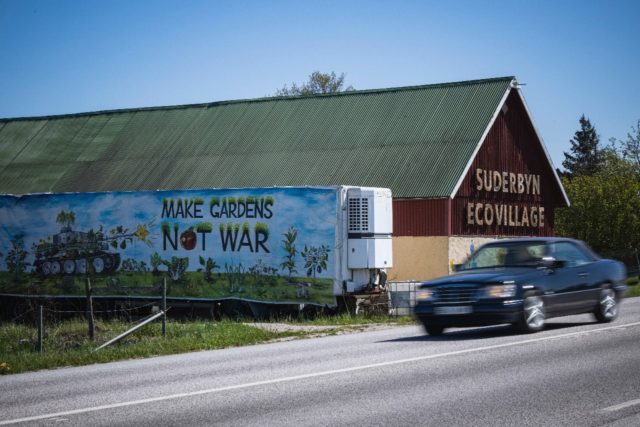A new and more serious reality looms large for Sweden’s conscripts as their military service now takes place in the shadow of Russia’s invasion of Ukraine.
The war has seen Sweden drastically ramp up its military readiness and take the “historic” step this week to apply for NATO membership, reversing two centuries of military non-alignment.
“You realise this is actually for real — I’m not here on some year-long summer camp,” says Axel Bystrom, a 20-year-old conscript on Sweden’s strategic Baltic Sea island of Gotland.
“Now it’s for real and that makes you more serious,” added the young squad leader with the P18 regiment, which was only re-established in 2018.
Breaking off branches from nearby spruces, Bystrom and his fellow soldiers meticulously cover three armoured vehicles to camouflage them.
“You are working to be as good as you possibly can all the time, because you are thinking, ‘this could be a reality. We may have to use it’,” the native of Visby, Gotland’s medieval main town, tells AFP.
More military exercises are also being held across Sweden.
War games
Sweden has long had a fear of Russia. With the end of the Cold War, the country made swingeing cuts to its defence spending.
But following Moscow’s annexation of Crimea in 2014, it decided to rearm and hike spending, reintroducing mandatory military service in 2017.
As only a fraction of the population is called up and avoiding service is quite easy, conscripts like Bystrom tend to be highly motivated.
Spooked by Russia’s assault on Ukraine, Sweden has announced a dramatic increase in defence spending, targeting two percent of GDP “as soon as possible”, up from around 1.5 percent expected in the next few years.
Overall, Sweden’s armed forces consist of some 55,000 people, including the Home Guard and part-time employees — around 23,600 are part of the regular forces.
For many Swedes, Gotland is a popular summer holiday destination known for its sandy beaches on a sleepy island of 60,000 people.
But it is also less than 350 kilometres (217 miles) from the Russian exclave of Kaliningrad.
“Gotland is situated in the middle of the Baltic Sea. So if you own Gotland, you can pretty much control the air and naval movements in the Baltic Sea,” P18 commander Magnus Frykvall explains.
A common theory is that in a conflict Russia would want to seize the island and install its S-400 surface-to-air missile defence system, effectively blocking off most of the southern Baltic Sea.
The Gotland regiment is still growing. According to Frykvall, they can now field around 800 soldiers and plan to increase numbers to 4,000 during wartime.
The uptick has been accelerated after Russian President Vladimir Putin “made it clear that he is willing to use military force to gain his political goals”.
At its peak during the Cold War, some 25,000 troops and reserves were stationed on Gotland — more than six times the amount planned for now.
But the planned boost in artillery and anti-aircraft systems means the regiment would “probably” be enough to “meet any threat.”
If Sweden’s NATO application — currently facing diplomatic hurdles from Turkey — were accepted, it would deter anyone from attacking Gotland, according to Frykvall.
“Thirty-two countries are much stronger than one,” he says, referring to NATO’s guiding principle that an attack on one member is seen as an attack on all.
‘Make Gardens Not War’
For residents living near the regiment, the increased military activity has been very noticeable.
“We have machine gun fire, we have explosions, we have artillery shots, shots from tanks as well,” says Robert Hall, a local Green Party politician.
“We have tanks moving in and out of the military area and on the road 17 metres in front of our house, so we hear a lot of noise a lot of the time”, he says.
In an eye-catching contrast, the ecological commune he helped found lies just across from the entrance to the military area.
Next to the sign for the “Suderbyn Ecovillage”, a giant banner shows a tank overgrown with plants and reading “Make Gardens Not War”.
For Hall, who is originally from California, the nature of the whole island has gone through a dramatic shift since he first came.
“We moved here in 1995 and there was still a lot of euphoria on the island about the fall of the Iron Curtain,” he says.
“Gotland really wanted to position itself as the neutral meeting place in the middle of the Baltic Sea.”
That idea has now instead given way to a new line of division.
“We’re back to where we were before 1989, with a divided sea, even though it’s not quite divided in the same location anymore,” Hall said.

COMMENTS
Please let us know if you're having issues with commenting.